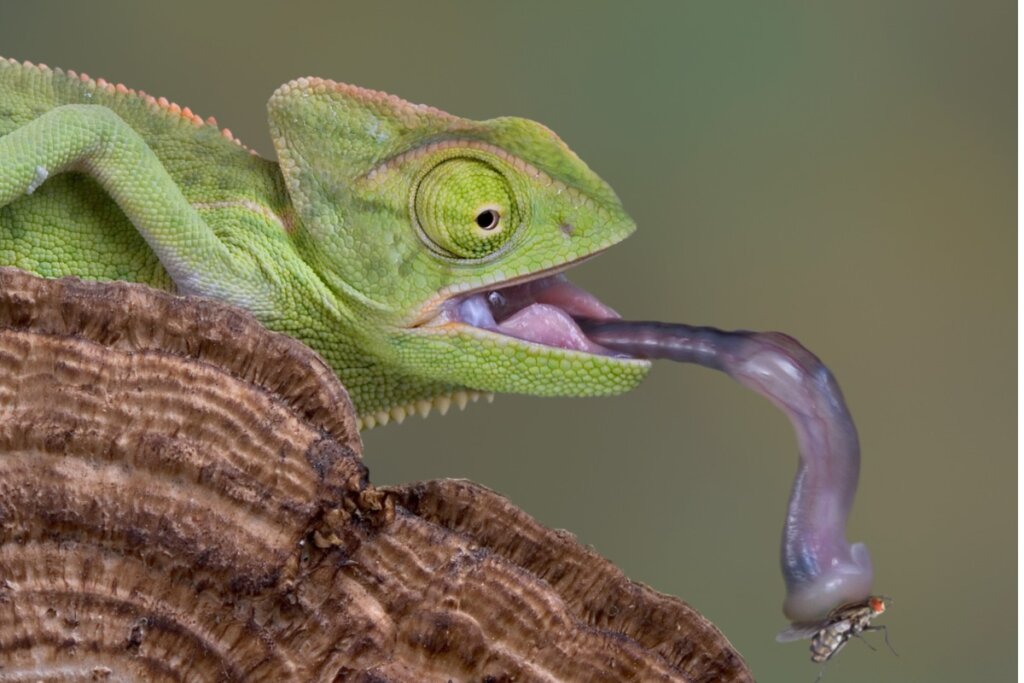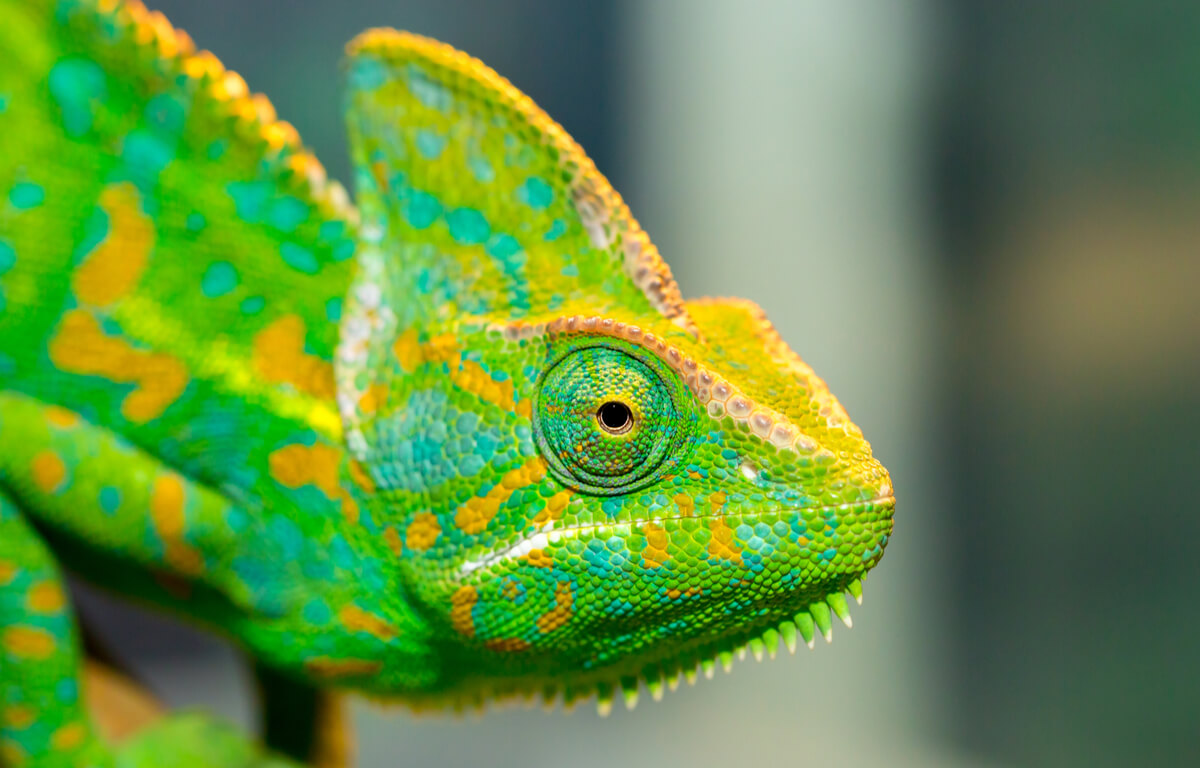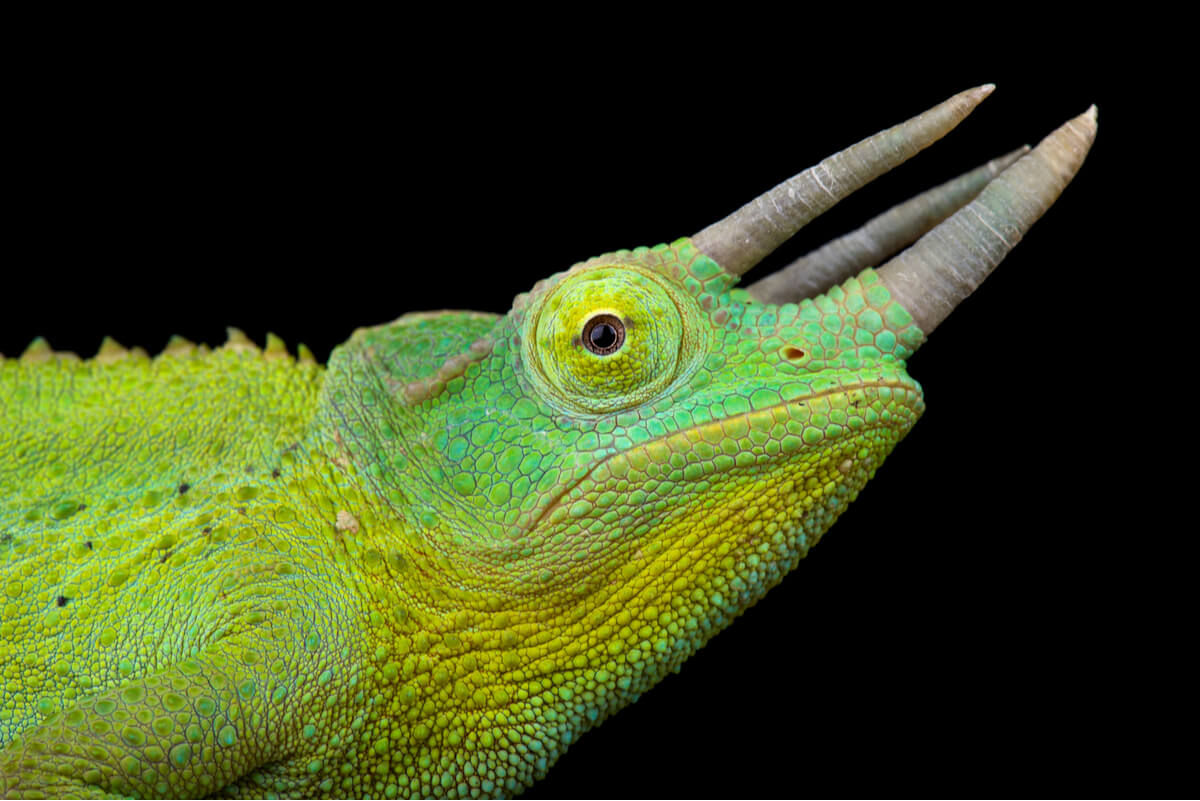Do Chameleons Drink Water?

Chameleons are fascinating reptiles. Their changing coloration, slow movements, and sticky tongue attract the attention of all terrarium enthusiasts around the world, which is why they are becoming increasingly common in homes. However, these beautiful animals need very special care. Today, we ask the question: do chameleons drink water?
This question may seem anecdotal, but the fact of the matter is that dehydration is a very common reason for these reptiles to have to be taken to the veterinary clinic. If you want to learn more about the nutritional habits of chameleons (including whether and how they drink water), read on.
What are chameleons?
Before exploring hydration in these animals, we need to classify them zoologically. Chameleons are reptiles that belong to the family Chamaeleonidae, which in turn belongs to the order Squamata and the class Reptilia. To date, about 200 species belonging to this particular taxon have been described.
Chameleons have adapted to arboreal life and to hunting guided by a visual system. For this reason, they’re famous for their oddly arranged claws, their prehensile tails (which are useful for staying anchored to a branch), and their sophisticated vision. These animals have the most advanced visual apparatus of the reptile group and have an arc of vision of 360°.
Chameleons are becoming more and more common as domestic pets, but, unfortunately, several species are still taken from their natural environment for commercialization. The most commonly captive-bred specimens belong to the species Chamaeleo calyptratus (Yemen chameleon) and Furcifer pardalis (panther chameleon).
These two species are the most common ones in specialized shops, but there are many more. Their requirements vary according to the specimen itself and its taxonomy, but, in general, they’re considered to be complex care reptiles not recommended for first-time keepers.
Illegal removal of animals from their ecosystems for sale is still a problem. If you want to keep a chameleon, look only for captive-bred species.

Do chameleons drink water?
Nowadays, we still believe that without water there’s no life. Some animals can dispense with the mechanical act of hydration (as is the case with certain species of desert vertebrates), but they still need to obtain that water from their food. The few living creatures that don’t drink as such, still obtain water by chewing leaves, plants or insects.
Do chameleons drink water? The answer is yes, but it’s a little more complex than it might seem at first glance. For example, if you give one of these reptiles a bowl of water you will never see it approaching it for hydration. Because they live in trees in their natural environment, they don’t have the instinct to come down to the ground to drink from a puddle or river.
In the wild, chameleons take advantage of the dew and raindrops that form each morning and evening on the surface of leaves to hydrate themselves. Depending on the species, they do this for different periods of time each day, but they do it more often than most people think.
Chameleons drink from water droplets that condense in their environment.
How to hydrate a chameleon
The best way to keep your chameleon hydrated is to keep the relative humidity of its terrarium according to its needs. For example, Furcifer pardalis requires a humidity of 60-90% depending on the time of year, while C. calyptratus needs a figure between 50-80%.
To achieve these high humidity values, it’s best to have a programmed misting system that dispenses water in the form of small particles every few hours onto the roof of the mesh terrarium. This way, the animal will be able to take advantage of this time to drink. If you have natural vegetation that conserves a little more of this humidity, even better.
The need for high relative humidity is a basic rule in many chameleon species, as they come from ecosystems with tropical climates and lots of vegetation. If they have no droplets to consume in their environment, they’ll dehydrate quickly.
On the other hand, there are also specific drinking troughs for chameleons. These usually consist of a fountain that releases droplets slowly but steadily. This mechanism mimics the dew falling from the branches, so the reptiles usually accept it without much difficulty.
You can offer your chameleon water near its mouth with a syringe. If it sticks out its tongue a little, try dispensing a few drops slowly and slowly until it has had enough.
Will my chameleon drink tap water?
In general, reptiles accept drinking water without any problem. However, there are regions where this water is treated with too much chlorine or contains too many minerals and chemicals. In these cases, it’s best never to offer the animal water directly from the tap.
The safest (and cheapest) option is to put the tap water in a basin and let it stand for 24 hours. This allows the harmful chemical compounds to evaporate and the liquid becomes safer to drink. If you want to prevent further dehydration, there are reptile conditioners available in specialty stores.

The best treatment for dehydration is prevention
Chameleons are prone to dehydration, especially if their environment is drier than the species in question requires. A reptile lacking in water will have its eyes sunken into its sockets, won’t hunt, will move very little, and will have a very dull color. It’s very difficult to treat this condition once it becomes established in the chameleon.
To avoid this, offer water to your chameleon with a syringe or dispenser at least once a week. In addition to this, you should keep the relative humidity high, keep vegetation in the terrarium, and have an automated rain or misting system. Keeping one of these reptiles requires a lot of work, but it’s always worth it.
All cited sources were thoroughly reviewed by our team to ensure their quality, reliability, currency, and validity. The bibliography of this article was considered reliable and of academic or scientific accuracy.
- Chamaeleo calyptratus, Animal Diversity Web. Recogido a 29 de septiembre en https://animaldiversity.org/accounts/Chamaeleo_calyptratus/
- What & How Do Chameleons Drink, Oddly cute pets. Recogido a 29 de septiembre en https://oddlycutepets.com/what-do-chameleons-drink/
- Camaleón deshidratado, terrariofilia.com. Recogido a 29 de septiembre en http://www.terrariofilia.com/enfermedades/camaleon-deshidratado/
